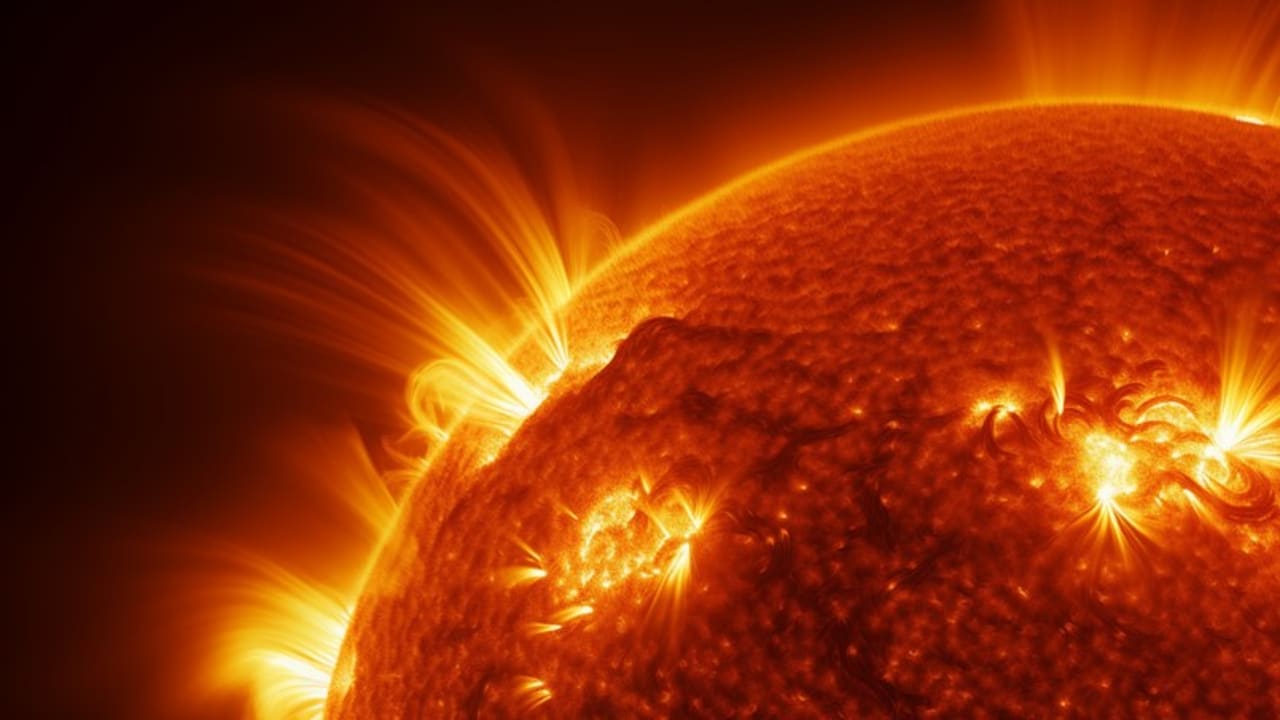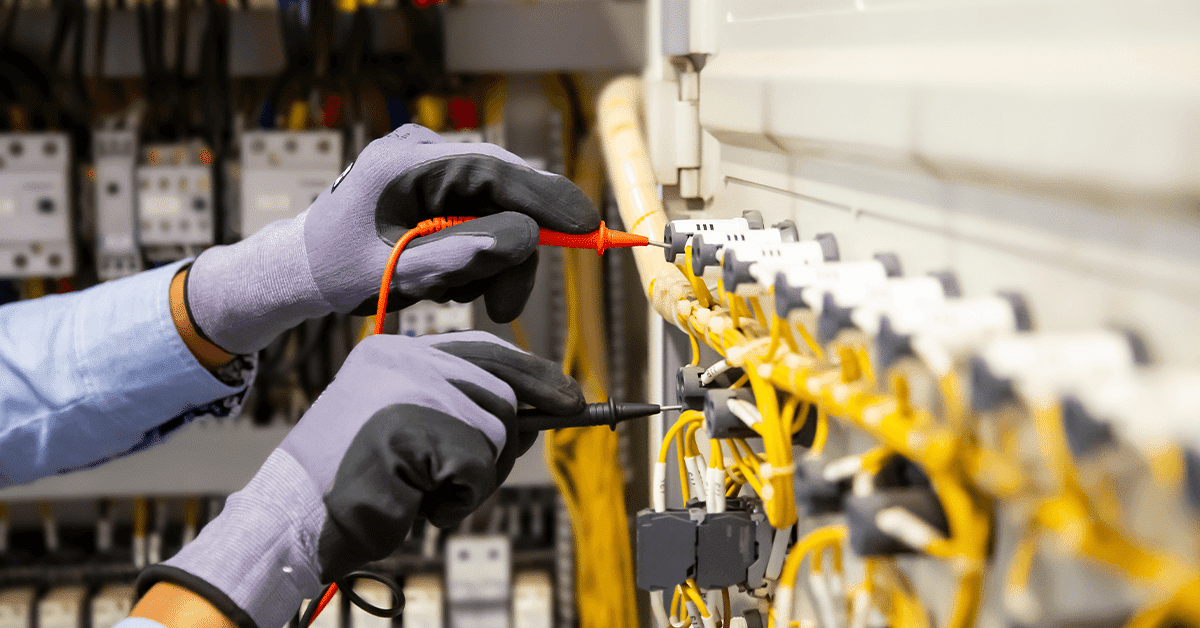Jun 22, 2024 - Source: Tom Braxton

Aerospace, Articles, Electromagnetic Compatibility, EMC, Lightning & Surge, Military, News, Shielding, Telecom
When we think about weather, we know what it is. We feel it, worry about it, and talk about the heat, the moisture, the wind. Weather is dynamic, though mostly predictable because we can measure its conditions.
We also know that the atmosphere involves large scale electrical activity. Cloud masses move above and below each other, generating enormous static-electricity levels. Lightning happens and becomes the source of atmospheric electromagnetic interference (EMI). We know it in its most frequent form as crackling on an AM radio.
Beyond the earth we can also think about outer space having weather. The sun is a roiling ball of explosive gas generating bursts of energy through its own atmosphere. Though we don’t think of a ball of gas as having a surface, what we see is the photosphere that gives the sun its shape.
Its atmosphere and movement give the sun seasons and storms that discharge at levels dwarfing the earth’s most violent lightning strike. Those discharges also cause EMI, but at levels millions of times higher than those on earth.
Teams of space-weather forecasters in various locations serve the National Oceanic and Atmospheric Administration (NOAA), the National Aeronautics and Space Administration (NASA), and their contractors, all of which comprise the Space Weather Prediction Center (SWPC).
Monitoring the sun, they watch for surface solar flares and coronal mass ejections (CMEs), which take form beneath the photosphere and have been described as billion-ton bubbles of magnetized plasma that spray toward earth in a solar storm.
Solar storms can be bad news. The sun launches a tsunami of energy, and if that energy wave washes over the earth, it can disrupt or damage electronic and power networks. In 1859, astronomer Richard Carrington saw a bright flash on the sun’s surface.
Later, the aurora borealis, or northern lights, appeared with strange intensity at lower latitudes. Telegraph systems began chattering randomly or stopped working. This crippling wave of EMI became known as the “Carrington event,” and potential recurrences remain a concern for space-weather forecasters.
A high-level solar storm rising to a Carrington event could cause widespread disruption. The power grid’s thousands of miles of wire would act as receiving antennas and propagate an electrical surge that would cascade through the entire network.
EMI protection can be in a form as simple as a conductive shield to protect electronics, like that of a device’s metal enclosure. Fortunately for us, the earth’s magnetic field acts as a shield deflecting most cosmic EMI. But no shield is 100% effective, and neither is the earth’s magnetic field. A big enough CME could surge through the power grid, the telecom network, and cause problems for orbiting satellites outside the magnetic field’s protection.
Sunspots are dark areas in the sun of intense magnetic, or B-field, energy that usually precede a solar storm. Appearing in eleven-year, 200-year, and longer cycles, space-weather forecasters watch their growth and movement, much as meteorologists watch for low-pressure areas that portend a coming storm.
The SWPC forecasters base their solar-storm warning predictions on data from a series of tools, such as helioviewer systems that process real-time images of the sun’s surface.
In addition, there are satellites circling the sun in fixed orbits between the earth and the sun providing solar-event and CME detection: the Deep Space Climate Observatory (DSCOVR); the Global Geospace Science (GGS, or Wind, referring to its detection of the solar wind); the Advanced Composition Explorer (ACE); and the Solar and Heliosphreric Observatory (SOHO).
If SOHO or one of its companion satellites detects a burst, SWPC has time to alert power and network operators that a solar storm is on the way.
The satellites and their instruments employ receivers detecting the 10.7 cm band of frequencies, around 2800 MHz, emitted by the sun. This “F10.7” signal allows more precise determination of the activity in the sun’s interior where the magnetic field poles originate. F10.7 signals are collected at SWPC locations and compared with data from other satellite feeds.
We think about weather here on earth and rely on meteorologists to detect dangerous conditions as they develop. It’s also good to know that someone is thinking about the weather way out there.
Dr. Katie Kosak, a contractor with a.i. solutions, a space-weather contract company, is among the forecasters working with Dr. Kenneth Schatten, a developer of the models that describe the sun’s magnetic fields. She works closely with the mission analysis team in the NASA Launch Services Program., where solar-storm EMI is of keen interest.
Missions bound for space must anticipate EMI and provide sufficient shielding and other mitigation steps since circuit and wireless EMI disruptions can be catastrophic.
“The helioviewer tool provides visual images in real time of significant solar events, like CMEs,” Dr. Kosak explained. “If a CME appears to be generating a solar storm, there is typically a lag between 16 hours and several days before the storm reaches earth. That gives us time to closely monitor data from SOHO, giving us the resolution needed to alert users who may be at risk.”
Sunspots come in positive and negative magnetic pairs and are indicators of solar activity. But they are blunt instruments. They are not able to tell, for instance, when a solar storm might occur, though the size and movement of sunspots can suggest its likelihood.
Just as forecast precision has increased in meteorology, precision has increased in the prediction of space weather. Mission plans that involve a working spacecraft need to know if, when, and where a solar storm is likely to occur.
The level of energy in a solar storm is enough to travel ninety-three million miles to penetrate the earth’s magnetic field. After a severe CME, there is also enough energy after penetrating the magnetic field and disrupt or damage the web of electronics modern society depends upon.
Solar physicists have studied the sun’s behavior with increasing precision for decades. They know, for instance, that sunspot activity, which may presage a solar flare or CME, follows a cycle of roughly eleven years. They also have crafted a model of the sun’s magnetic flux, resulting in the Schatten Index that aids in longer-term prediction of the sun’s magnetic-field behavior.
A dynamo uses rotating magnets to create an electric field, which we employ on a large scale to provide electric power. The solar dynamo generates immense magnetic fields through a dynamo process in the sun’s interior. Complex magnetic fields are created, which, when large enough, can create huge flares on the sun’s surface.
They can be compared to the familiar discharges of a lightning strike, but at levels millions of times greater. The plasma resulting from a major flare or a CME becomes the billion-ton plasma bubble described earlier.
Those bursts give off huge surges of electromagnetic energy that is so extremely broadband that it consists of radiation not only in the familiar electromagnetic spectrum, but also the ionizing radiation of X-rays and beyond. The solar-dynamo model describes how this vast potential develops.
“There is still a lot we don’t understand about the sources in the sun creating the magnetic field causing the enormous arcs that make up solar flares,” Dr. Kosak said. “The dynamo model explains its mechanism, but there’s still much we need to learn.”
Those practicing in different corners of science look for patterns in the natural world to anticipate what is likely to happen in the future. Geologists have learned that tectonic plates are constantly in motion at barely perceptible speeds, but the force of their motion will eventually bring about earthquakes.
Physicians have learned that if pulse rate and blood pressure exceed expected bounds, a cardiac event is probable. Their ability to plan for a likely event has been built on the cumulative growth of knowledge in their art, made possible by the increased sophistication and accuracy of their instruments.
Solar physicists’ understanding of the sun’s electromagnetic behavior and the tools they use to quantify that behavior have also grown in precision, allowing them to characterize the effect EMI from a solar flare or CME may have.
Like meteorologists using doppler radar to predict severe thunderstorms and tornadoes, solar-weather forecasters’ use of the detection capabilities of SOHO, DSCOVR, Wind, ACE, and helioviewers allows them time to warn network operators and ground-based satellite controllers of an incoming solar storm.
Another Carrington event and its vast EMI effects could disable Global Positioning System (GPS), communication satellites, and the wired network we all rely on.
EMC began as a technically primitive discipline in the early days of wireless more than a century ago. Our understanding of its importance in communication, commerce, transportation, and public safety has made us appreciate the ubiquity of interfering signals.
Our understanding of the measures required to minimize EMI’s harmful effects has grown as well. We know now that EMI can originate anywhere – from annoying distant lightning to the explosive interior furnace of the sun.
Next RF-Trending

Functional Safety, Risk Management, EMC and EMI
Learn More